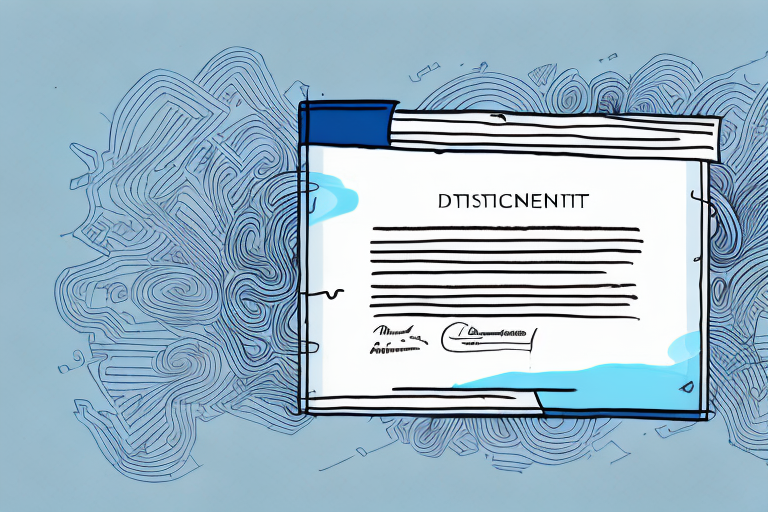What Is an Indirect Signature Requirement?
An indirect signature requirement is a method used by businesses to ensure the legal delivery of their goods or services to the correct recipient. This requirement typically involves the delivery person obtaining a signature from someone other than the recipient, such as a neighbor or building manager, who can confirm that the package or service was delivered at the correct location and to the intended recipient.
How Indirect Signature Requirements Work
When an indirect signature requirement is in place, the delivery person will typically attempt to deliver the item to the intended recipient as usual. If the recipient is not available, the delivery person may then attempt to deliver the item to a neighboring apartment or building manager, who will then sign for the delivery on behalf of the recipient. This signed confirmation is then used as evidence of delivery to protect the business in the event of any future dispute or legal issues regarding the delivery of the goods or services.
It is important to note that an indirect signature requirement may not be available for all types of deliveries. For example, some high-value or sensitive items may require a direct signature from the intended recipient to ensure proper delivery and security. Additionally, some businesses may choose to waive the indirect signature requirement for certain customers or delivery locations, depending on their level of trust and familiarity with the recipient.
Legal and Compliance Aspects
Understanding the Legal Basis
Indirect signature requirements have a legal basis in many countries’ legal systems, such as the United States, where it is recognized as a form of evidence that a delivery was made to the intended recipient. This is particularly important in industries where proof of delivery is required, such as eCommerce or pharmaceuticals, where the goods and services being delivered could be high-stakes items.
Compliance Considerations
Indirect signature requirements must be implemented in accordance with applicable laws and regulations. For example, some jurisdictions may require businesses to obtain specific types of signatures or maintain certain records related to the delivery process. Non-compliance with these requirements can result in legal penalties and reputational damage for the business.
Additionally, businesses should consider the potential impact on customer experience when implementing indirect signature requirements. While these requirements may provide added security and protection against fraud, they can also create inconvenience and delays for customers who may not be available to sign for their packages. Balancing security with customer satisfaction is crucial.
Pros and Cons of Indirect Signature Requirements
Advantages
- Increased Accountability: Provides clear evidence of delivery, reducing the risk of disputes.
- Improved Delivery Success Rates: Increases the likelihood that packages are received by someone authorized.
- Reduced Risk of Theft or Loss: Ensures that packages are not left unattended, decreasing the chances of theft.
Disadvantages
- Increased Costs: Additional steps in the delivery process can lead to higher operational costs.
- Workflow Challenges: Obtaining signatures from neighbors or building managers can complicate the delivery process.
- Potential Delays: If a signature cannot be obtained, deliveries may be delayed or returned.
Ultimately, the decision to use an indirect signature requirement depends on the specific needs of the business and the industry in which it operates.
Implementing Indirect Signature Requirements in Your Business
Assessing Your Needs
Businesses should first assess the specific needs of their industry and the delivery process to determine whether an indirect signature requirement is necessary. Factors to consider include the value of the goods being delivered, the frequency of successful deliveries, and the potential risks of lost or stolen packages.
Establishing Policies and Procedures
Once the decision is made to implement the requirement, businesses should establish clear policies and procedures for obtaining and documenting signatures. This includes training staff to ensure compliance with these policies and using reliable systems to track and store signature data.
Customer Communication
Communicating the new requirement to customers is essential. This can be achieved through email notifications, website updates, or including a notice in the delivery package. Clear instructions on how to provide an indirect signature should be provided to minimize confusion and ensure a smooth delivery process.
Continuous Evaluation
Businesses should regularly review and evaluate the effectiveness of their indirect signature process to identify any areas for improvement and ensure that it continues to meet the needs of both the business and its customers.
Alternatives and Best Practices
Alternatives to Indirect Signatures
- Direct Signature Requirements: Requires in-person signatures from the recipient, providing an added layer of security.
- No Signature Requirements: Packages are left at the doorstep without requiring any signatures, increasing convenience but potentially raising security concerns.
- Digital Delivery Confirmations: Utilizes technology such as digital signatures or biometric authentication to verify deliveries.
The choice of which approach to take should be based on a careful consideration of the risks and benefits, as well as the specific needs and constraints of the business.
Best Practices for Implementation
- Consistent Signature Sources: Always obtain signatures from a reliable source, such as a trusted neighbor or building manager.
- Secure Signature Storage: Encrypt all digital signatures to ensure they are secure and cannot be altered after the fact.
- Clear Communication: Clearly communicate indirect signature requirements to customers and provide tracking information to prevent disputes.
- Alternative Verification Methods: Have policies in place for situations where a signature cannot be obtained, such as taking a photo of the package at the delivery location.
Common Industries Utilizing Indirect Signature Requirements
Indirect signature requirements are commonly used in industries such as eCommerce, logistics, pharmaceuticals, and other high-stakes delivery services. In these industries, the risks associated with failed or disputed deliveries can be significant, and the use of indirect signature requirements helps to ensure that goods and services are delivered accurately and securely.
The financial services industry also frequently employs indirect signature requirements. Banks and other financial institutions often require indirect signatures for the delivery of important documents, such as credit cards, checks, and legal documents, to prevent fraud and ensure that sensitive information is delivered to the correct recipient.
The Future of Indirect Signature Requirements in eCommerce and Retail
The use of indirect signature requirements is expected to continue growing in the eCommerce and retail industries as businesses seek to improve the security and reliability of their delivery processes. However, the ongoing shift towards contactless delivery methods may also lead to the development of new alternatives, such as digital delivery confirmations or biometric authentication.
One potential challenge for the continued use of indirect signature requirements is the risk of fraud or misuse of signatures. As more deliveries are made without direct contact between the recipient and the delivery person, there may be an increased risk of fraudulent signatures or signatures being used without the recipient's knowledge or consent. This could lead to disputes and legal issues for both businesses and customers.
Advancements in autonomous delivery vehicles and drones may also impact the future of indirect signature requirements. These technologies may necessitate new methods of delivery confirmation and authentication, such as remote biometric scanning or digital signatures. As these technologies continue to develop and become more widespread, businesses will need to adapt their delivery processes to ensure the security and reliability of their services.
Conclusion
Indirect signature requirements play a crucial role in ensuring the secure and accurate delivery of goods and services across various industries. By implementing best practices and staying informed about emerging trends and technologies, businesses can effectively balance security with customer satisfaction, ultimately enhancing their delivery processes and reputation.




















